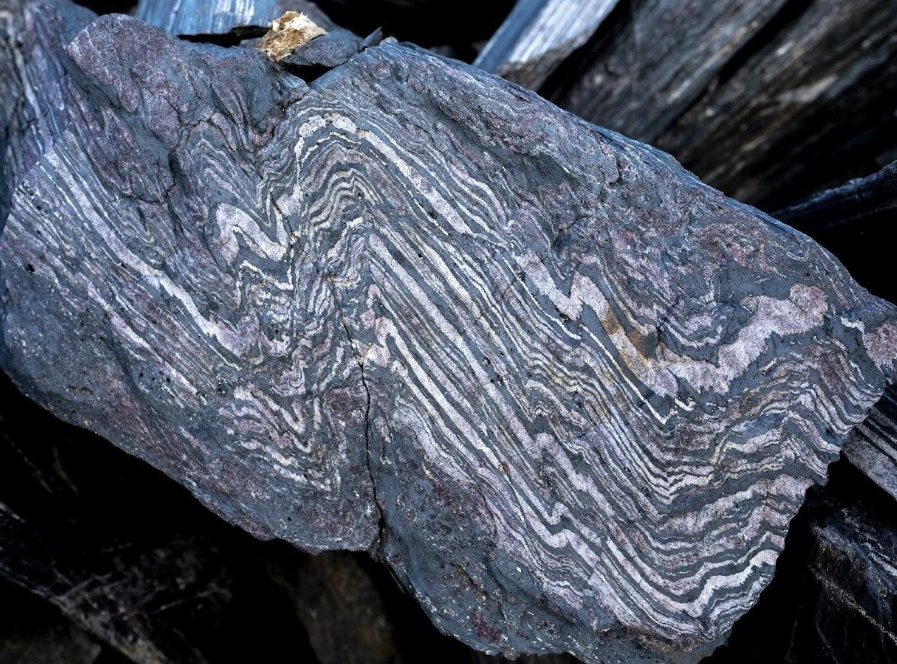Researchers from the University of Oxford and MIT have discovered evidence that Earth’s magnetic field as it appeared 3.7 billion years ago closely resembled the field we observe today, providing new insights into how life was able to thrive on the planet.
Scientists believed that Earth’s magnetic field in the distant past was much different than it is today. However, the findings presented in this latest study, published in the Journal of Geophysical Research, not only push back the timeline for the establishment of Earth’s modern magnetic field but also offer new insights into Earth’s early environmental conditions.
The study focused on analyzing ancient iron-rich rocks from the Isua region in Greenland. These rocks, dating back 3.7 billion years, have preserved magnetic properties similar to those of the current magnetic field surrounding Earth. The strength of the ancient magnetic field was found to be at least 15 microtesla, which is about half the strength of today’s field but still significant enough to suggest a similarly protective role against cosmic radiation and solar winds.


Solar wind is a stream of charged particles emitted by the Sun that could turn a planet like Earth into a hellscape. Enter the magnetic field. As all that radiation and energy from the sun approaches Earth, it interacts and deflects off this protective shield, and is prevented from bombarding the planet. In simple terms, the interaction of solar energy with the Earth’s magnetic field is good, as it allows life to continue by soaking up sunlight for energy. The deflection is crucial because it prevents the solar wind from directly impacting Earth’s atmosphere, which could potentially strip it away and expose the planet to harmful cosmic radiation.
‘Extracting reliable records from rocks this old is extremely challenging, and it was really exciting to see primary magnetic signals begin to emerge when we analysed these samples in the lab,” Professor Claire Nichols, the study’s author, and researcher from the University of Oxford stated. “This is a really important step forward as we try and determine the role of the ancient magnetic field when life on Earth was first emerging.”
This discovery is crucial as it provides the oldest direct estimate of Earth’s magnetic field strength from whole rock samples, offering a more stable and reliable assessment than previous methods that relied on individual mineral crystals.
The study suggests that even during times when the solar wind was much stronger, Earth’s magnetic field provided substantial protection to the planet’s surface. This protective barrier may have been crucial for the development and migration of life from oceanic environments to the continents.
The generation of Earth’s magnetic field is a result of the geodynamo process occurring in the fluid outer core of the planet. This process is driven by the mixing of molten iron, powered by the solidification of the inner core. The new data implies that the early dynamo mechanism was efficient even before the inner core had fully formed, raising intriguing questions about the early magnetic field’s sustainability. Understanding variations in the magnetic field strength over time is also vital for insights into when Earth’s inner core began to solidify, a process that influences the planet’s heat loss and geodynamic activities such as plate tectonics.
The unique geological stability of the Isua Supracrustal Belt, where these ancient rocks were found, has played a crucial role in preserving these magnetic signals. Unlike other regions, Isua’s thick continental crust shields it from extensive tectonic activity, thus protecting the integrity of the magnetic records. Moreover, these findings could shed light on atmospheric mysteries, such as the historical loss of xenon from Earth’s atmosphere. Researchers speculate that the magnetic field might have played a role in removing charged xenon particles, a theory that will require further investigation.
Looking ahead, the research team plans to extend their study to other ancient rock formations across Canada, Australia, and South Africa. Their goal is to further unravel the history of Earth’s magnetic field, and explore how this understanding could lead us to seek life on other worlds with similar conditions.
MJ Banias covers space, security, and technology with The Debrief. You can email him at mj@thedebrief.org or follow him on Twitter @mjbanias.

